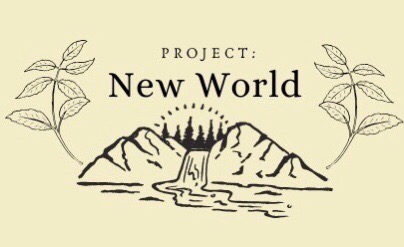Lake Pattagansett, CT- The Regenerative Outline
- Dylan Hettick-Harlow

- Aug 4
- 2 min read
Lake Pattagansett is a 128 acre, S-shaped body of water in East Lyme, Connecticut; slightly north of route 1. My family farm; White Gate Farm; is actually right on the edge of this thousands of years old lake. This lake has been the site of joy and play and childhood wonder for me; a place I personally consider to be sacred; a place of home. I’m writing this blog post to share a few things with you all a few things: the history of the lake, how it’s being managed poorly, and how we can not only make it healthier and more diverse… but how we can actually grow and source food for humans from it as well :D I’ll be covering all kinds of topics including landscaping layouts If like to install at properties around the lake, native plants and food sources to introduce, and instructions on how to maintain and actually benefit the lake by interacting with it.
Let’s begin with a little history of Lake Pattagansett. The name Pattagansett seems to be a colonized revision of an indigenous word, "Pattaquonset", which is quite ironic because it roughly translates to small round hill... and there's no hill to be found in the lake Pattagansett. The lake itself is around 34 feet deep at it's center; hosting a series of native and even edible fish including: largemouth-bass, chain pickerel, calico bass,sunfish, yellow perch, bullhead and even eel. Lake Pattagansett is technically a watershed; one of several that are fed by the Pattagansett River. The Pattagansett River is fed by Powers Lake, which lies about a mile North of Lake Pattagansette. As the Pattagansett River flows into Lake Pattagansett through the NorthWest corner; a large patch of lily pads covers the area. According to pollen samples sourced by scientific studies, it's theorized the lake could have formed as far back as 14,000 years ago.
Over the years of visiting back home recently, I’ve seen housing development around the lake boom and expand; bringing with them overuse of fertilizers & pesticides used to maintain plain-grass lawns, each quickly installed after clearcutting any forestry around the area…. and along with this new development has come a surge in colonizing species (this is a term I use for species not native to a country that quickly cover vast spaces and outcompete most or all other life forms) within the water & around its edges; algae blooms and white chemical froth washing up on the shores of the lake on a weekly or even daily basis in the summer. A handful of years ago, the town of East Lyme tried to address the most prevalent colonizing species; Variable Leaf Watermilfoil (Myriophyllum heterophyllum); ….by spraying an herbicide in the water to change the hormones of the milfoil to the point they can no longer reproduce or survive… the side-effects of which have barely been tested. And after introducing a literal hormone-altering chemical into the water... the colonizing plants have already started to come back.
With this being said, I have a vision for the lake and the landscaping of it's surrounding properties & infrastructure to help with all of these hurdles.


Comments